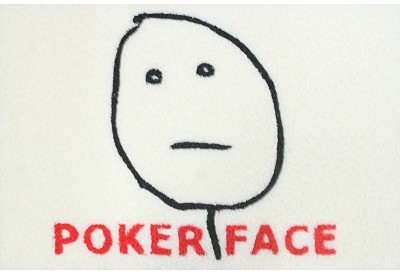Before delving into the remediation debate, I would like to present my view on what a written text “says” about its author. For better or for worse, I judge people by their writing…at least in a knee-jerk reaction that I try hard to keep in check. I do not necessarily like this about myself nor do I allow it to become my outwardly expressed view of an author as I do my best to keep a poker face about such first impressions. Nevertheless, my reactions reflect my view of these writers in that I see them as either well versed in the ideas and “moves” of what they are writing about or as newcomers to the topic and is associated “culture.” In other words, in people’s writing I see their experience or lack of experience.
Sometimes this becomes an unwarranted negative value judgment like when I am working with a PhD student in psychology whose first language is English and she makes mistakes with count and non-count nouns and that little voice pops into my head saying, “Really?! She got this far in her program and still does not know that research is non-countable!? My god, what else does she not know?!” This is when I stick to that poker face because I know that if I can look beyond this “nuisance” to the broader strokes of the argument she is laying out in her text, I will probably be impressed with her knowledge. Other times, this becomes a warranted negative judgment like when I am working with a freshman whose first language is English and I can tell that his paper is plagiarized. But even in his case, I keep that poker face because I would prefer to turn the situation into a moment of learning à la Mina Shaughnessy, giving him the benefit of the doubt the first time I “catch” him plagiarizing thinking that he did it because he did not really know that he was doing it or that he did not know other strategies to identify and develop his own ideas. Of course sometimes I am blown away by the turn of a phrase or a powerful appeal to my sensibilities and I think, “This woman is brilliant!” without reading another paragraph, in which I might find some twisted phrasing or an ungodly use of a semicolon.
So it all comes down to the fact that, whether I like it or not, written texts are concrete records of a writer’s ideas, and when ideas are set in concrete it is hard to remember the fluidity of thought that generated them. That’s the rub of written text: it really is simply a representation of thought, but because of the physical nature of text, we take it to “be” thought, and we make judgments about the quality of a writer’s cognition based on this.
Remediation is related to this because we, as writing instructors, are compelled to help people “sort through their thinking” and find ways to get their ideas down in words so that they can be readily consumed by readers…and be seen as intelligent, careful thinkers. We as a group value the ability to isolate, elucidate and transcribe ideas in text so that others can access them. We focus on student needs and work to address them. However, as Mary Soliday points out over and over in The Politics of Remediation (2002), there is another side to remediation, an institutional, political side.
Throughout the first part of this book, Soliday outlines the history of composition remediation in US higher education, showing that since the 1880s composition programs have risen and fallen in prevalence based on what at first seems to be solely to address student needs but what can also be seen to be predicated on institutional needs to enroll more students and to differentiate levels and areas of focus, both in terms of instruction and research. “It is not only student need that defines remediation’s presence, but also the political needs of institutions” (Soliday, 2002, p. 62). In the latter part of the book, Soliday uses her historical outlines to advance the idea that remediation is actually more about institutional needs than it is about student needs, charging the composition community to not only face up to the this reality but to conduct “more research and specific case studies of the political roles that remediation plays at colleges (p. 143).
Reference
Soliday, M. (2002) The politics of remediation: Institutional and student needs in higher education. Pittsburgh, PA: The University of Pittsburg Press.
Photo Credit
Poker Face http://funny-pictures.picphotos.net/poker-dec-home-poker-face-boys-and-children/


No Comments so far ↓
There are no comments yet...Kick things off by filling out the form below.